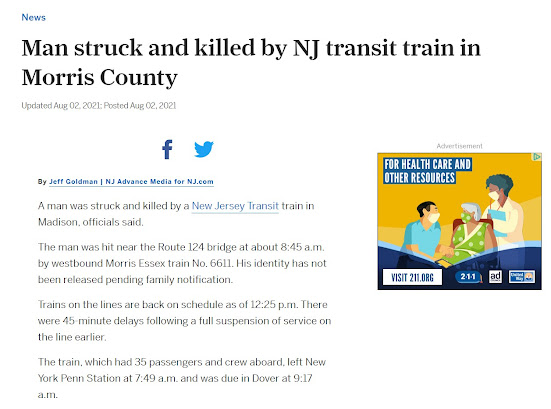Death by train Almost half of America’s engineers have operated a train that killed someone on the tracks. Locally, it’s estimated to be even worse. Afterward, many suffer nightmares, anxiety, PTSD.
Death by train
Almost half of America’s engineers have operated a train that killed someone on the tracks. Locally, it’s estimated to be even worse. Afterward, many suffer nightmares, anxiety, PTSD.
Her first fatality still haunts.
It’s late afternoon, and Raelynn Dickerson, a SEPTA engineer on the Main Line, is approaching a city station where people often risk dashing across the tracks. She has to be alert. Someone is walking directly in the path of the train.
“I blow the horn,” she recalled. “He doesn’t move.”
Dickerson sets a valve handle to the emergency position and hears a loud rush of air from the brakes. But the train, traveling 60 mph, will not stop before it hits the man. She steps out of the cab to avoid seeing what happens next.
There’s an awful secret shared by America’s train engineers: Almost half have operated a train that killed someone. Locally, it’s estimated to be even worse. Many longtime engineers have experienced more than one death on the tracks.
“When I hit him, I really was feeling like I killed one of God’s children,” Dickerson, 38, said, remembering that day almost 10 years ago. “I did. I felt that way.”
Nightmares, anxiety, and even symptoms of post-traumatic stress disorder can follow. Some drivers leave railroad work forever. Transit agencies typically grant just three days off after a fatality. With a therapist’s approval, workers can get additional time, but train engineers often choose to just go back to work.
“Three days is nothing,” said Howard Rombom, a Long Island-based psychologist who specializes in working with New York City’s transit operators. “You need some time to both process it and get comfortable.”
Deaths on America’s railroads have been trending upward since hitting the lowest point in nearly three decades in 2012. Last year, 1,096 people died on the nation’s rails, according to the Federal Railroad Administration. Those killed include workers and people in cars hit at crossings, but the majority are trespassers who intentionally or accidentally put themselves in the path of a train. The 756 trespasser deaths on America’s tracks last year were the most since 2002.
Deaths on the region’s rails are widely dispersed, but since 2011 have occurred most frequently on the Media/Elwyn Line, followed by the Trenton and West Trenton lines. The majority of Amtrak deaths were on the Northeast Corridor. PATCO, meanwhile, rarely reports fatalities. Five have died on that line since 2011, the most recent in 2016.
Deaths on transit lines like the El and Broad Street Line have increased, too. Philadelphia’s subway system has the highest rate of suicide deaths per mile in the nation.
The most recent subway or passenger railroad death in the Philadelphia region was reported Nov. 10.
An Inquirer analysis of federal data showed suicides account for about a third of railroad trespassing deaths. In Philadelphia, suicides represent about half of the deaths across SEPTA modes, which include buses and trolleys. This year, though, the agency has reported that 15 of 18 deaths appear to have been suicides.
“That’s the one that’s puzzling us right now,” said Jim Fox, assistant general manager for system safety at SEPTA. “Suicides as a whole are puzzling our industry.”

Komentarze
Prześlij komentarz